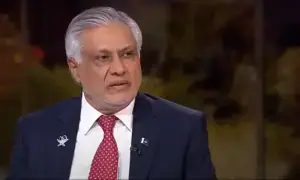SBP announces monetary policy, jakes up interest rate by 1%
State Bank of Pakistan (SBP) hiked on Friday its key policy rate by 100 basis points to 16 percent as the economy struggles to recover from floods that have caused heavy damage.
“This decision is aimed at ensuring that elevated inflation does not become entrenched,” the central bank said in a statement on its official Twitter handle.
It said that the decision reflected the monetary policy committee’s view that inflationary pressures have proved stronger and more persistent than expected.
“Amid the ongoing economic slowdown, inflation continues to rise with global and domestic supply shocks pushing up costs,” the State Bank said and added that the increase in the prices of food items was the main cause of inflation.
The MPC noted that the short-term costs of bringing inflation down were lower than the long-term costs of allowing it to become entrenched. At the same time, curbing food inflation through administrative measures to resolve supply-chain bottlenecks and any necessary imports remained a high priority.
Since the last meeting, the MPC noted three key domestic developments. First, headline inflation increased sharply in October, as the previous month’s administrative cut to electricity prices was unwound. Food prices have also accelerated significantly due to crop damage from the recent floods, and core inflation has risen further.
Secondly, a sharp decline in imports led to a significant moderation in the current account deficit in both September and October. Despite this moderation and fresh funding from the ADB, external account challenges persist. Thirdly, after incorporating the post-disaster assessment of the floods and latest developments, the fiscal year 2022-23 projections for growth of around 2 percent and a current account deficit of around 3 percent of GDP shared in the last monetary policy statement are re-affirmed. However, higher food prices and core inflation are now expected to push average financial year 2022-23 inflation up to 21-23 percent.
Dconomic activity has continued to moderate since the last MPC meeting on account of transient disruptions from floods and on-going policy and administrative measures.
In October, most demand indicators showed double-digit contraction on a yearly basis including sales of cement, petroleum products and automobiles. On the supply side, electricity generation declined for the fifth consecutive month, falling by 5.2 percent year-on-year.
In the first quarter of fiscal year 2022-23, the LSM production was flat relative to last year, with only export-oriented sectors contributing positively. In agriculture, latest estimates suggest sizeable output losses to rice and cotton crops from the floods which, together with tepid growth in manufacturing and construction, will weigh on growth this year.
The current account deficit continued to moderate during both September and October, reaching $0.4 and $0.6 billion, respectively.
Cumulatively, the current account deficit during the first four months of financial year 2022-23 fell to $2.8 billion, almost half the level during the same period last year. This improvement was mainly driven by a broad-based 11.6 percent fall in imports to $20.6 billion, with exports increasing by 2.6 percent to $9.8 billion.
On the other hand, remittances fell by 8.6 percent to $9.9 billion, reflecting a widening gap between the interbank and open market exchange rate, normalization of travel and US dollar strengthening.
On the financing side, inflows are being negatively affected by domestic uncertainty and tightening global financial conditions as major central banks continue to raise policy rates.
The financial account recorded a net inflow of $1.9 billion during the first four months of fiscal year, compared to $5.7 billion during the same period last year.
Looking ahead, higher imports of cotton and lower exports of rice and textiles in the aftermath of the floods should be broadly offset by a continued moderation in overall imports due to the economic slowdown and softer global commodity prices.
As a result, the current account deficit is expected to remain moderate in financial year 2022-23 , with forex reserves gradually improving as anticipated external inflows from bilateral and multilateral sources materialize.
If the recent decline in global oil prices intensifies or the pace of rate hikes by major central banks slows, pressures on the external account could diminish further.
With input from APP
For the latest news, follow us on Twitter @Aaj_Urdu. We are also on Facebook, Instagram and YouTube.




















Comments are closed on this story.